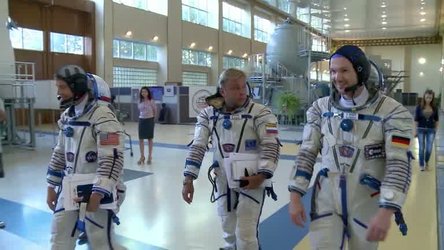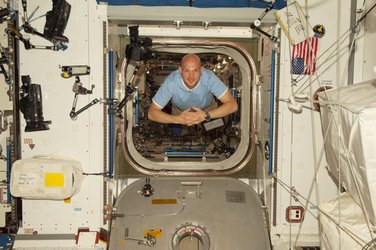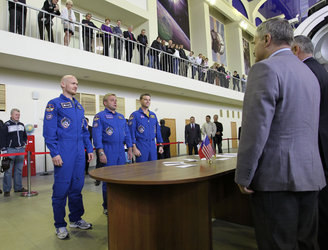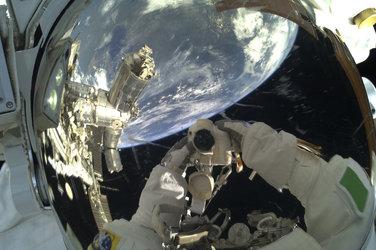Flying Classroom
In the Flying Classroom, Alexander used small items to demonstrate several principles of physics in microgravity to students aged 10–17 years.
A gyroscope, viscous liquid and sweets are some of the objects he will use to talk about motion, foam and particle agglomeration.
Alexander perform six experiments and demonstrations. All of them, except the Rosetta–Philae docking demonstration were tested on a parabolic flight campaign in Bordeaux, France, in 2013.
Rosetta–Philae docking demo


Access the video
One of the highlights of this Flying Classroom was a demonstration of ESA’s Rosetta mission, which put a lander on a comet in November 2014.
This experiment visualised the difficulties of landing on an object when there is little gravitational pull. Alexander showed the landing strategy in a simple way using the weightless environment of the Space Station.
Landing scenarios with various difficulty levels will be attempted: from landing on a rotating ‘comet’ that is not moving and landing on one that is both rotating and moving.
Particle agglomeration

Science can also be sweet. Alexander filled zipper bags with sugar, sweets and hard mints.
The experiment demonstrated the behaviour of weightless matter floating freely.
After inflating the bags and a vigorous shaking, the particles collected together, forming structures as planets and dust particles do in space.
Silly Putty
This experiment demonstrated the unusual properties of a bouncing putty, a toy made of silicone polymers.
Alexander threw a small ball of putty at different speeds and at a distance of 30 cm towards a small square of similar material placed perpendicularly to the trajectory of the ball.
Will the toy stick or bounce off the target depending on its velocity?
Foaming of pure water

Foam decays much more slowly in microgravity than on the ground. Alexander tested this principle on the Station.
He generated foam by shaking water and air in a syringe. He filled syringes with different volumes and ratios of water and air before sealing them and shaking the syringes vigorously. He observed the stability of the foam for about a minute.
Different ratios produced different quality foams with different stabilities. Alexander learned together with students that the stability of the foam is higher than on Earth.
Gyroscope
Alexander made own gyroscope in space out of two CD players connected by a pole.
This experiment showed the stability of a gyroscope’s angular momentum. Students see how the frame of reference rotates due to the Space Station’s trajectory around Earth.














 Germany
Germany
 Austria
Austria
 Belgium
Belgium
 Denmark
Denmark
 Spain
Spain
 Estonia
Estonia
 Finland
Finland
 France
France
 Greece
Greece
 Hungary
Hungary
 Ireland
Ireland
 Italy
Italy
 Luxembourg
Luxembourg
 Norway
Norway
 The Netherlands
The Netherlands
 Poland
Poland
 Portugal
Portugal
 Czechia
Czechia
 Romania
Romania
 United Kingdom
United Kingdom
 Slovenia
Slovenia
 Sweden
Sweden
 Switzerland
Switzerland


















































